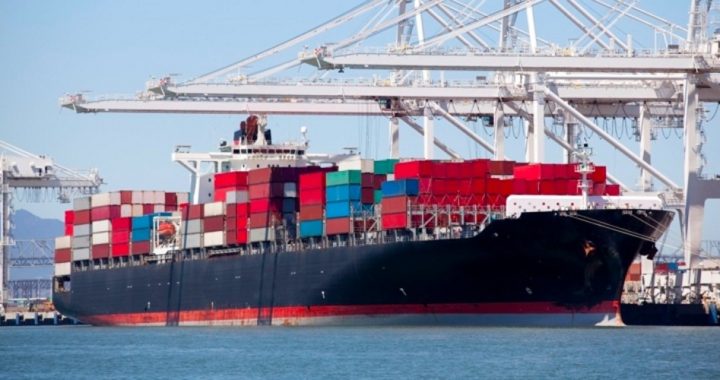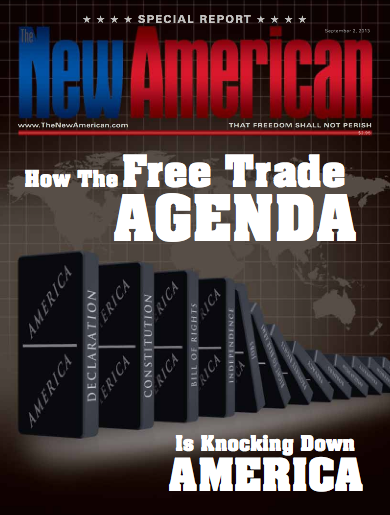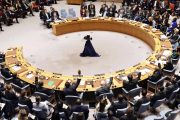
The promoters of the misnamed Free Trade Agreements (FTAs) claim that these agreements will create jobs and prosperity. They also claim that the FTAs will not undermine national sovereignty. The reality is very different, as the NAFTA record demonstrates.
Promise: Free Trade Agreements (FTAs) will boost exports and prosperity.
This has been one of the most repeated broken promises of the FTA promoters, with NAFTA being the prime example. Two of the big-name experts most often cited by NAFTA supporters are Gary Hufbauer and Jeffrey Schott of the Peterson Institute for International Economics (PIIE). In their influential 1993 PIIE paper, “NAFTA: An Assessment,” they predicted that “with NAFTA, U.S. exports to Mexico will continue to outstrip Mexican exports to the United States, leading to a U.S. trade surplus with Mexico of about $7 (billion) to $9 billion annually by 1995.” They further predicted that the U.S. trade surplus with Mexico would rise to $12 billion annually between 2000 and 2010.
Reality: NAFTA turned an annual trade surplus with Mexico into an ever-growing deficit.
In 1993, the year before NAFTA went into effect, the United States had a $1.66 billion trade surplus with Mexico; by 1995, the first year after NAFTA had entered into force, that changed to a $15.8 billion deficit. The deficits have escalated ever since, soaring to $24.5 billion in 2000, $49.8 billion in 2005, and $74.7 billion in 2007. From 2010 on, the deficits have been running in the $60+ billion range annually.
In 1993, the year before NAFTA, we imported around 225,000 cars and trucks from Mexico. By 2005, our imports of Mexican-made vehicles had tripled to 700,000 vehicles annually, and in 2012 Mexico’s export of vehicles to the United States surpassed 1.4 million.
Chrysler, Ford, and GM transferred major production facilities (and jobs) from the United States to Mexico.
In 1993, our annual trade deficit with Canada was $10.7 billion; by 1995 it had ballooned to $17.1 billion, and by 2005 to $78.4 billion.
* * *
Promise: NAFTA will create thousands of new, good-paying jobs.
PIIE’s Gary Hufbauer and Jeffrey Schott claimed in “NAFTA: An Assessment,” that NAFTA would create 170,000 net new jobs in the United States.
Reality: NAFTA has killed/exported hundreds of thousands of American jobs.
NAFTA proponents have been unable to identify any significant new jobs created here. Hufbauer admitted in a Wall Street Journal interview in 1995: “The best figure for the jobs effect of NAFTA is approximately zero…. The lesson for me is to stay away from job forecasting.”
The federal government’s program known as Trade Adjustment Assistance had by 2010 certified over 720,000 workers as having lost their jobs due to NAFTA.
* * *
Promise: When NAFTA was being proposed, its advocates ridiculed concerns that the agreement would threaten U.S. sovereignty — in the same way that TPP and TTIP proponents dismiss the same concern today.
Reality: NAFTA tribunals have already overridden U.S. laws and U.S. court rulings, and prominent NAFTA backers have admitted that opponents’ fears on this issue are justified.
Pro-NAFTA author William Orme, Jr. made this revealing admission in the Washington Post:
Didn’t Europe also start out with a limited free trade area? And, given the Brussels precedent, wouldn’t this mean ceding some measure of sovereignty to unelected bureaucrats?…
NAFTA’s defenders said no. They argued that the agreement is designed to dismantle trade barriers, not build a new regulatory bureaucracy. NAFTA, declared one congressional backer, “is a trade agreement, not an act of economic union.”
Yet the critics were essentially right. NAFTA lays the foundation for a continental common market, as many of its architects privately acknowledge. Part of this foundation, inevitably, is bureaucratic: The agreement creates a variety of continental institutions — ranging from trade dispute panels to labor and environmental commissions — that are, in aggregate, an embryonic NAFTA government.
Professor Robert A. Pastor (in photo above), one of the leading architects for expanding NAFTA into a continent-wide version of the European Union, wrote in Foreign Affairs, the journal of the Council on Foreign Relations: “NAFTA was merely the first draft of an economic constitution for North America.”
NAFTA supporter Andrew Reding of the World Policy Institute has written:
With economic integration will come political integration…. One of the purposes of NAFTA and other international trade agreements is to set the principles by which such decisions are to be made, including the critical question of how to ‘harmonize’ differing labor, consumer, environmental, and other standards. By whatever name, this is an incipient form of international government.
 The above article is part of our special report “How the Free Trade Agenda Is Knocking Down America.” This report warns that the free trade agenda is a dangerous and deceptive bait and switch. The intent is not to create genuine free trade but to transfer economic and political power to regional arrangements on the road to global governance. Because of what is at stake, we encourage you to read the entire special report (click here for the PDF) and to become involved.
The above article is part of our special report “How the Free Trade Agenda Is Knocking Down America.” This report warns that the free trade agenda is a dangerous and deceptive bait and switch. The intent is not to create genuine free trade but to transfer economic and political power to regional arrangements on the road to global governance. Because of what is at stake, we encourage you to read the entire special report (click here for the PDF) and to become involved.



